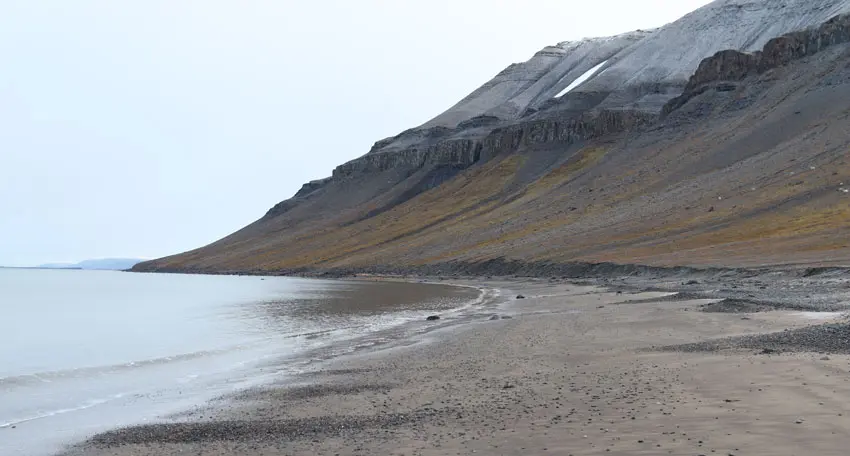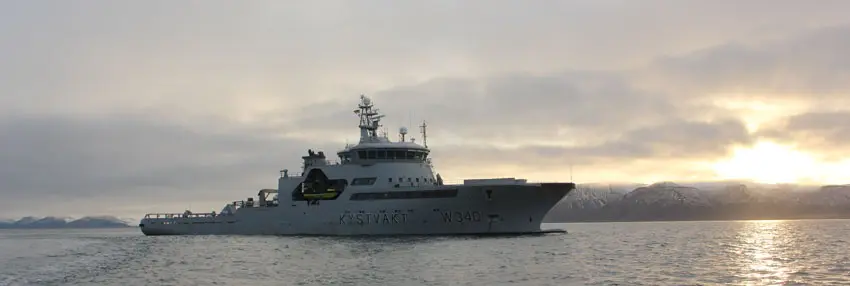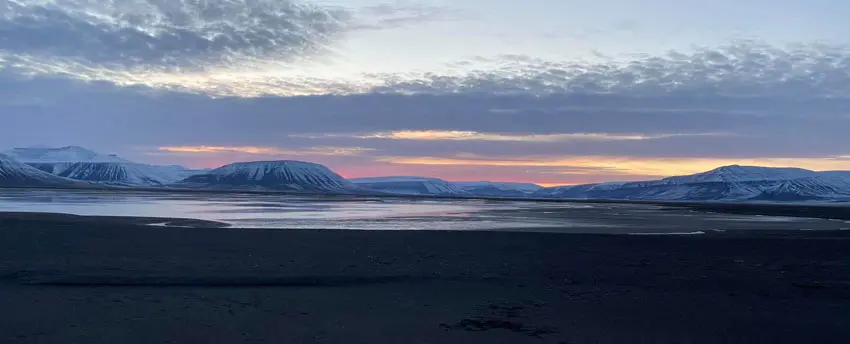Stepping back into the past – UNIS repeat a 30-year old beach study in Storfjorden
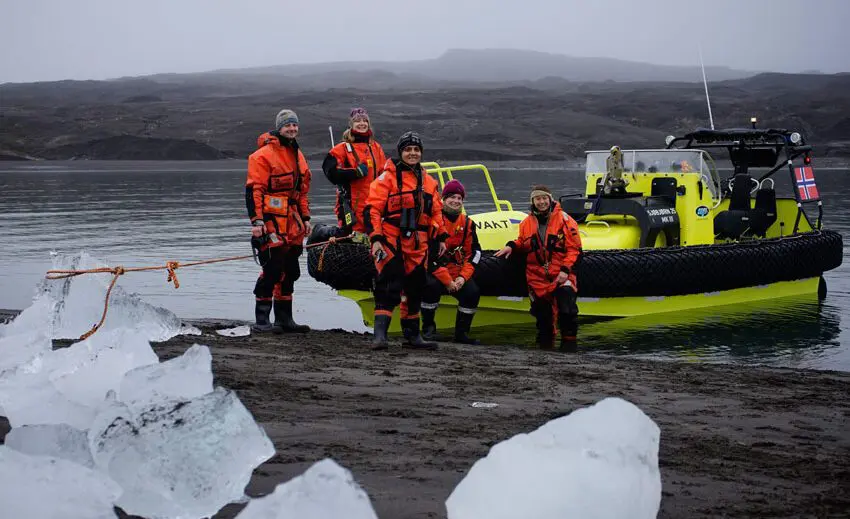
The UNIS Arctic biology team in Inglefieldbukta on their last sampling day. PhD student Sil Schuuring and research assistant Vanessa Pitusii in the back with PhD student Cheshtaa Chitkara, master student Daniela Walch and associate professor Janne Søreide in the front. Photo: Helge Bjørnholm/Kystvakta.
Top image: The UNIS Arctic biology team in Inglefieldbukta on their last sampling day. PhD student Sil Schuuring and research assistant Vanessa Pitusii in the back with PhD student Cheshtaa Chitkara, master student Daniela Walch and associate professor Janne Søreide in the front. Photo: Helge Bjørnholm/Kystvakta.
30 years ago, there was a large coastal study in Svalbard. Earlier this month marine biologists from UNIS revisited some of those old study locations in eastern Svalbard to see whether changes have occurred due to climate warming. Here is a report of their fieldwork.
30 September 2020
Text by research assistant Vanessa Pitusi and associate professor Janne Søreide, UNIS.
Coastal ecosystems are some of the most productive marine environments. Even though the Arctic coastline contributes up to 34 % of the global coastline it is poorly studied. Coastlines in the Arctic are harsh environments to live in. Plants and animals must be able to withstand strong waves, large changes in temperatures, drought and ice scouring. Thus, intertidal habitats in the Arctic can be rather barren and appear devoid of life. Warmer climate and less sea ice, however, have led to a five-fold increase in seaweed and reappearance of blue mussels (after 1000 years of absence) in West Spitsbergen. BUT do we see similar distinct changes in flora and fauna in eastern Svalbard where the climate still resembles the more “true Arctic” climate? Well, this was something UNIS wanted to explore when we got the chance to go to eastern Svalbard for a week in September with the Norwegian coast guard ship KV Barentshav.
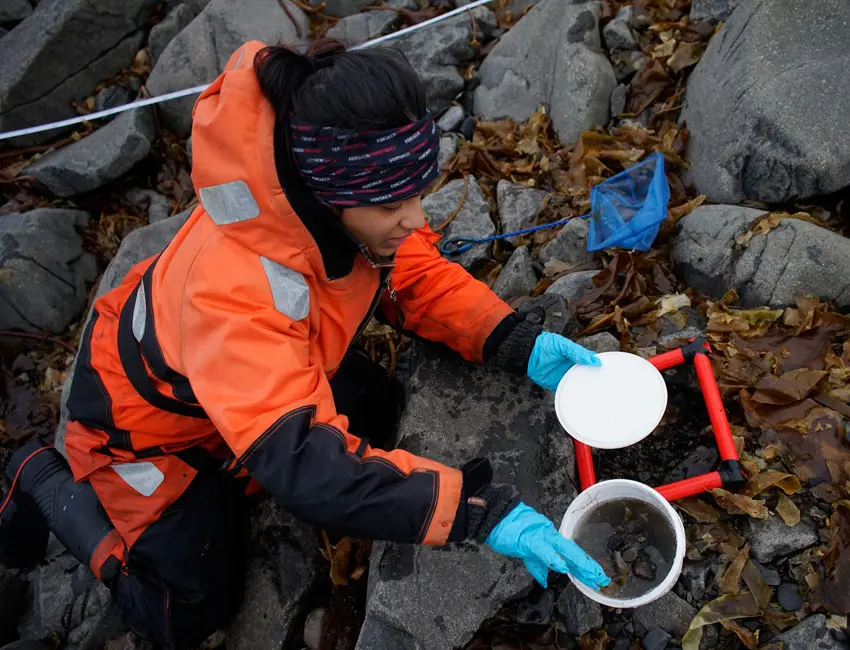
From 1985 to 1991 a large coastal study was conducted in Svalbard to evaluate the vulnerability to oil spill. The Norwegian Polar Institute led the project, but the investigations on biodiversity and productivity in the tidal beach zone was performed by the Institute of Oceanology Polish Academy of Sciences (IOPAN). Polish researchers travelled around Svalbard in small inflatable boats to investigate the macrofauna (>0.5 mm) and macroalgae (a.k.a. seaweed) inhabiting the different coastal landscapes (e.g. sandy versus rocky) in Svalbard. They travelled the total length of about 1400 km of coast which they divided into 128 units, each of about 10 km length there two to five sampling stations were located on each unit They repeated parts of this survey in 2015-2016, but did not manage to revisit the study sites in Barentsøya and Edgeøya. As part of a joint UNIS –IOPAN project: De-icing of the Arctic Coast: critical or new opportunities for marine biodiversity and ecosystem services (ACCES; http://www.acces-arctic.com/) we applied for Coast Guard ship time to revisit these sites and to establish some new sites in Agardhbukta and Inglefieldbukta. Our proposal was successful and 13 September we sat “sail” with KV Barentshav to Storfjorden. Unfortunately, COVID-19 and quarantine restrictions prevented our Polish colleagues to join, but project leader Janne Søreide managed to gather a small but very strong and eager team of UNIS PhD and master students and headed east.
Sampling took place on seven beaches and included the eastern side of Svalbard with beach landings on Edgeøya, Barentsøya, and the east coast of Spitsbergen. Low tide occurred twice a day – early in the morning and in the evening, which enabled us to witness the beautiful pastel colours of sunrise and sunset. The mountains were dusted in snow, the landscapes were desolate, and the shores were different all around. Along the same coastline beaches could be sandy, rocky or gravelly. Beach samples were collected with 20×20 cm quadrats that were randomly placed 3-times along the low water line and moving up to the high-water line. Sampling in this manner enabled us to see which animals preferred which part of the intertidal zone. We dug up the upper 5-cm of the sand or gravel that the quadrat was placed on, and we collected all material in the frame on the rocky shores. Additionally, we scavenged the beaches for amphipods – turning over rocks, digging in mud and wading through water with small aquarium nets. Plastic was also collected along 100 m line transects to get some numbers of littering in these more remote beaches which have not been cleaned before.
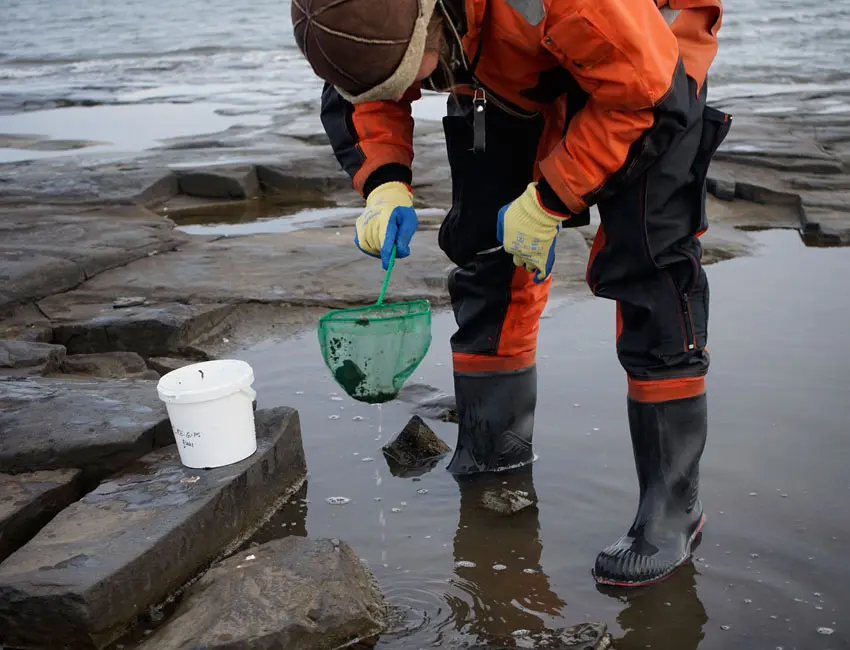
We quickly learnt just how variable the coastline could be. We saw the effects ice or potential lack of it had on seaweed coverage and we started to figure out what we could expect to find from the different beach types visited. We learnt where amphipods liked to hide and where not and quickly understood that the more sheltered bays and lagoons were the biological hot spots which also the presence of walrus and belugas confirmed.

The material we collected was sieved through special sieves and preserved. These samples will be partly analysed at UNIS and partly in Poland and will enable us to see how much the locations that we visited have changed in the past 30 years.
We would like to thank the crew of KV Barentshav for their skilled personnel and safe operations. Without their support we would not have been able to sample so many beaches at such short time. Despite of hard work we become somewhat heavier after the week-long cruise since the food on board was extraordinary.
This research was funded through the 2017-2018 Belmont Forum and BiodivERsA joint call for research proposals, under the BioDivScen ERA-Net COFUND programme.
